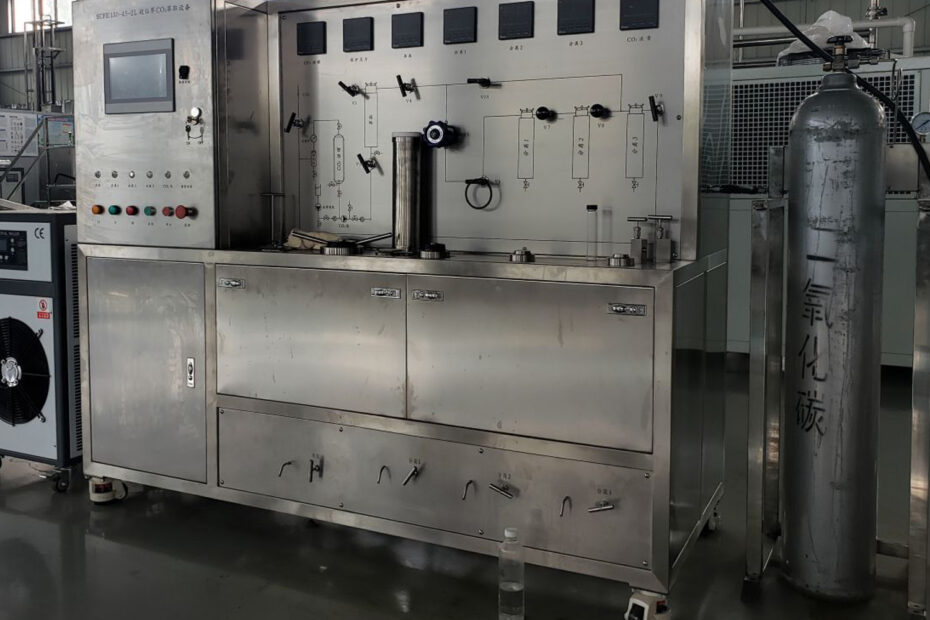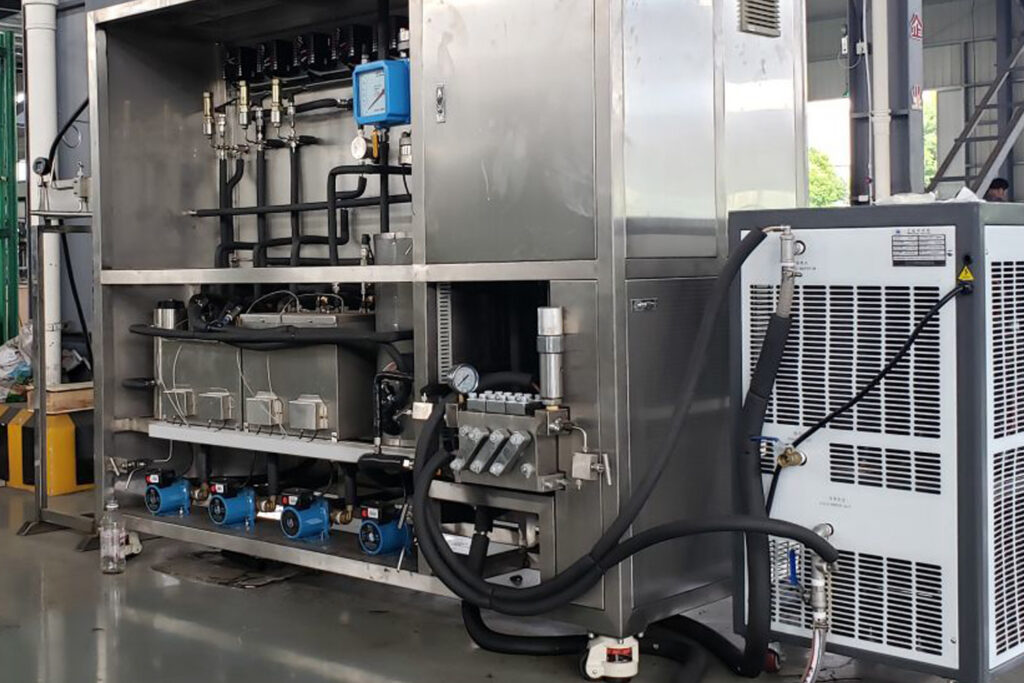Supercritical fluid extraction process is a new separation technology in modern chemical separation. SFE combines traditional distillation and organic solvent extraction, and uses the excellent solvent power of supercritical CO2 to effectively separate, extract and purify the matrix and the extract.
Supercritical CO2 is safe and non-toxic, has a diffusion coefficient similar to that of gas, a solubility of liquid, and a surface tension of zero. It can quickly penetrate into solid substances and extract their essence. It has the characteristics of high efficiency, low oxidation, and no chemical pollution.
Supercritical CO2 extraction process has the characteristics of fast mass transfer rate, strong penetration ability, high extraction efficiency and low operating temperature. This technology has been widely used in medicine, food, chemical industry and other industries.
The main components of supercritical CO2 extraction equipment include extraction kettle, separation kettle, purification and filtration system, power source part, refrigeration part, gas source part, time setting system and safety protection device, etc.
High-pressure Vessel Cylinder Structure Type
Most of the cylinders of supercritical fluid extraction high-pressure vessels have a small diameter and a large thickness. The main types of cylinder structures are as follows:
Single-layer integral forged cylinder
This structure is commonly used in supercritical extraction high-pressure vessels with a volume of less than 100L. Its advantages are simple structure and no weak deep ring welds and longitudinal welds. The manufacturing method is to forge the steel ingot into a cylindrical shape, then perforate the steel ingot, and then perform heat treatment, and machine the inner and outer wall surfaces, sealing steps and end threads. Its disadvantage is that the forging will cause a large difference in mechanical properties in different directions during the forging process, the ductile-brittle transition temperature is high, the possibility of low-stress brittle failure increases, and the requirements for processing equipment are also high. For supercritical fluid extraction containers, the requirements of health regulations must be met. Therefore, in order to maintain the hygiene of the inner surface of the container, a single-layer cylinder must use stainless steel forgings. The cost of using this structure for containers with too large a volume is too high, and a combined cylinder should be used.
Combined cylinder
As the pressure of the pressure vessel increases, the thickness increases, and the stress distribution along the wall thickness becomes more and more uneven. The inner wall stress of the cylinder is large, and the outer wall stress is small. When the ratio K of the outer diameter to the inner diameter of the cylinder is greater than 1.5, the unevenness of this stress distribution is more prominent. In order to improve the bearing capacity of the cylinder, double-layer and multi-layer cylinder structures have emerged to achieve the purpose of equalizing the stress distribution along the wall thickness.
Four Common Combined Cylinders
- Multi-layer wrapping type —- This is the most widely used combined cylinder structure in the world with the most manufacturing and use experience. The cylinder consists of an inner cylinder with a thickness of 12~25m and a multi-layer plate with a thickness of 4-12mm. To avoid cracks from extending in the thickness direction, the longitudinal welds between the layers should be staggered by 75°. The manufacturing process of the multi-layer wrapped cylinder is simple, and does not require large and complex processing equipment. Compared with the single-layer cylinder, it has high safety and reliability. The gap between the layers has the ability to prevent defects and cracks from extending in the thickness direction, reducing the possibility of brittle failure. However, the manufacturing process of multi-layer wrapped cylinders is complicated, the cycle is long, the efficiency is low, and the utilization rate of steel plate materials is low.
- Double-layer heat sleeve body —- The double-layer heat sleeve body consists of two concentric cylinders. The outer surface of the inner cylinder and the inner surface of the outer cylinder need to be precisely machined to make the outer diameter of the inner cylinder slightly larger than the inner diameter of the outer cylinder. The outer cylinder is heated and fitted with the inner cylinder to achieve an interference fit. In this way, the inner cylinder is pre-compressed and the outer cylinder is pre-stretched, achieving the purpose of homogenizing the stress of the cylinder during operation.
- Multi-layer heat sleeve body —- Increasing the number of layers of the heat sleeve body while keeping the total thickness of the container unchanged can improve the uniformity of stress distribution along the wall thickness and reduce the thickness of each layer of the cylinder. The number of layers of the multi-layer heat sleeve body can reach up to 5 layers. Too many layers will affect the heat transfer of the cylinder wall and increase the manufacturing process. In high-pressure occasions, multi-layer cylinders are often made of different materials, among which the inner cylinder is often made of materials with high tensile strength and low fracture toughness, and the outer cylinder is made of materials with slightly lower tensile strength and high fracture toughness.
- Wrapped cylinder —- For example, the flat steel belt staggered cylinder is a new type of wound cylinder structure first created in China. The thickness of the inner cylinder accounts for about 16~1/4 of the total thickness. It adopts simple “prestressed cold winding” and “pressing rod pre-bending and tight” technology to stagger the flat steel belt outside the thin inner cylinder at an angle of 15°~30° relative to the container circumference. The beginning and end of the steel belt are welded to the bottom head and the end flange respectively. This cylinder structure has high safety for the pressure extraction kettle. When the inner cylinder is damaged, the strength of the steel belt is not lost and it can still bear the load, which can achieve the effect of only leaking but not exploding.
Conclusion
In the design of supercritical extraction high-pressure vessels, compared with the single-layer cylinder, the main advantage of the combined cylinder is that only the inner cylinder must be made of stainless steel, while the outer cylinder, layer plate or steel belt can be made of ordinary carbon steel.

